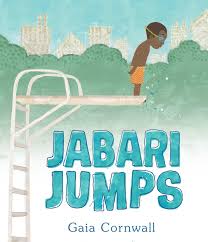Week 7 Fun!!
- Tate Alvarez
- Oct 2, 2020
- 4 min read
Happy Friday, Families!
This week we’ve begun to learn about storytelling and the importance and power to telling our own stories. We have done this by reading real stories about real people (and a little realistic fiction). We read the books Jabari Jumps (realistic fiction), Fauja Singh Keeps Going: A True Story of the Oldest Person to Ever Run a Marathon, Firebird, and over the course of two days read, She Was the First: The Trailblazing Life of Shirley Chisholm.
I chose to start with Jabari Jumps, even though it is a realistic fiction book, because this book does a wonderful job of sharing a single event in someone’s life, a small moment, in such a beautiful and detailed way. We talked a lot about how much feeling and detail the author was able to write and how much thoughtfulness that must have taken on their part. This text will be used as an anchor text for us throughout the school year, when writing short stories or when we want to write to capture feeling.
On Tuesday, we read the biographical story, Fauja Singh Keeps Going. I truly have never seen the children more engaged in a read aloud. For those of you who do not know, Fauja Singh became the only 100-year-old to ever run a marathon in 2011. One of the many reasons he continued running at such an old age was to give Sikh people positive representation in the media post 9/11. This becomes even more impressive when you learn that he was not even able to walk as a young child and because of that couldn’t attend school. Discussion surrounding this book was so special. There are so many children feeling validated and seen because someone chose to tell Fauja’s story to children. This will be something we keep referring to as we begin to tell our own stories.
On Wednesday we read Firebird, a story about Misty Copeland. Copeland was the first Black woman to become principal dancer at the American Ballet Theater in its 75-year history. This story is a sweet letter, penned to an aspiring Black ballerina, comforting her in her struggle and urging her to continue to chase her dreams. Copeland allows the reader to know her experience and the work and dedication it took to be where she is. This story is told in such a poetic way, using such brilliant figurative language throughout it all.
On Thursday and Friday, we read She was the First, a biographical story of the incomparable Shirley Chisholm. This book does a wonderful job of guiding you through her childhood and into her career as a politician. In the book, the author makes mention of Shirley’s time in Barbados as a young child giving her the opportunity to see people that looked like her “taking charge” and “getting things done”, which inspired her to do the same in her life. We discussed the importance of that moment for Shirley and how, again, we come full circle when we realize how many doors Shirley opened for other girls, but especially Black and Brown girls, by being someone courageous and persistent enough to break down barriers.
All these stories are important. They’re important because representation matters. There are so many stories left untold that could inspire people in ways that aren’t imaginable. This is the power of your voice and your story getting told. This is the importance of this unit for me. Students hearing stories of others and students feeling empowered to tell their own.
During our project time, for the next few weeks, we’ll be discussing different way people have told stories throughout history. This week, we learned about cave art. We watched a video and read a book about the Lascaux Cave. We looked at pictures from Lascaux and other caves around the world and tried to determine what they were communicating. One of the pieces that brought about the richest conversation, was one of hands at a cave in Argentina.
When I posed the question, “Why do you think they created these?”, they answered in thoughtful ways. “Maybe to show people they had a big family.” “Maybe so others could enjoy it or to impress others.” “Maybe to just tell people they were there.” As always, I was left impressed by them. After learning, I explained to them that we would be using this information to create our own cave art. To think about what they would want archeologists to find that represents them in 50,000 years.
We learned that one of the techniques these artists and storytellers used to make their creations was mixing rock and water to make paint. Impressed by this, one of the students posed that we try to make rock paint when creating our own art. Obviously, this sounded brilliant, so we were set to try to discover how to do this. After lots of mistakes and trial and error, one of the students finally found the way!
On Thursday, we went on a rock hunt, to find the dustiest rocks of the bunch and then we were off to create our very own cave art. They were so creative in using different colors and even began to mix rock dust to make unique colors. Some drew hands to represent them and their families, some drew favorite animals, or the letters in their names, but all shared their own stories in such a lovely way.
On Friday, we spent our afternoon learning out in the sunshine and fresh air at County Farm Park. Please enjoy the pictures below:
I hope you all have the loveliest weekend,
Tate
































































































Comments